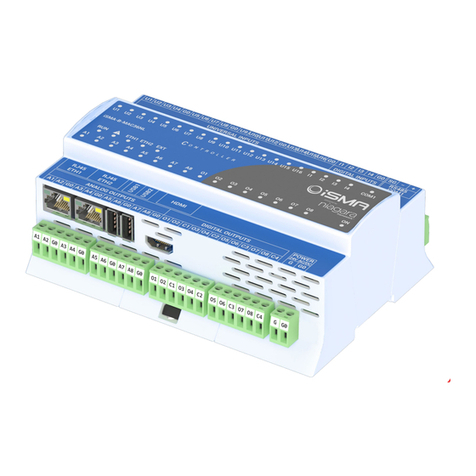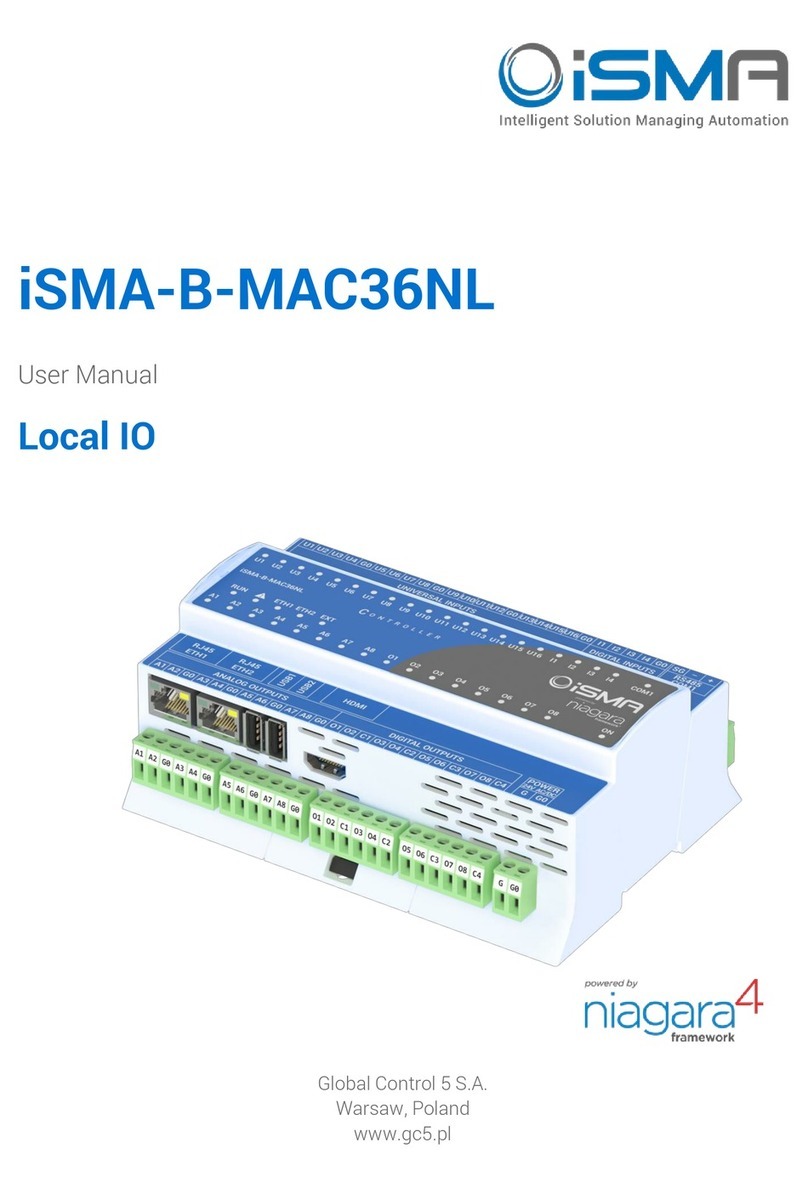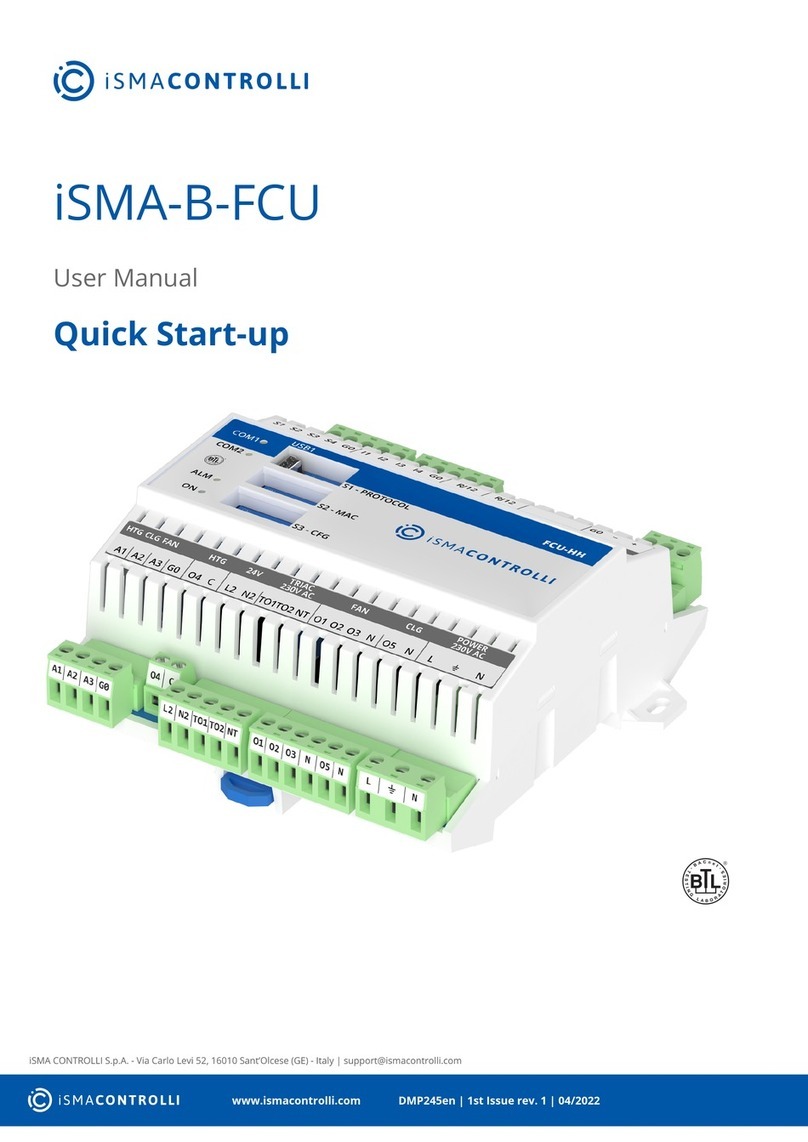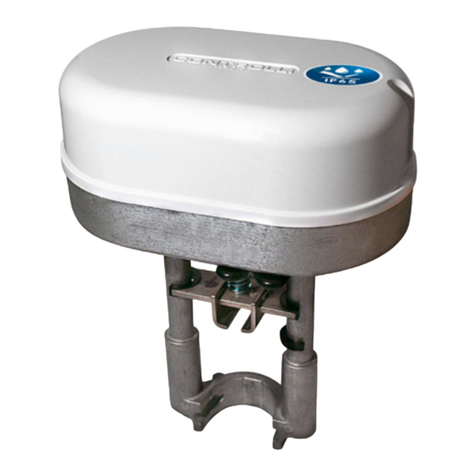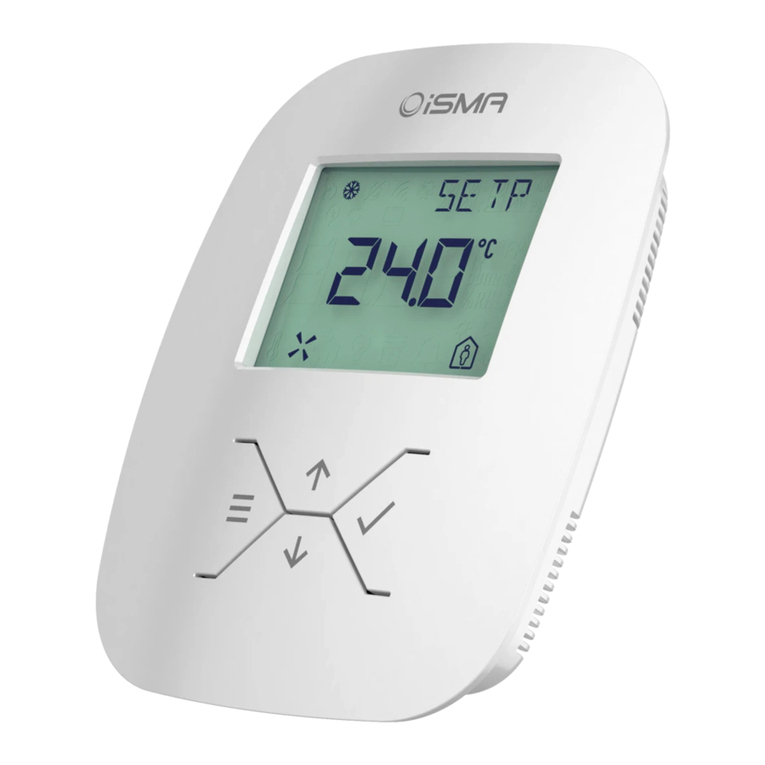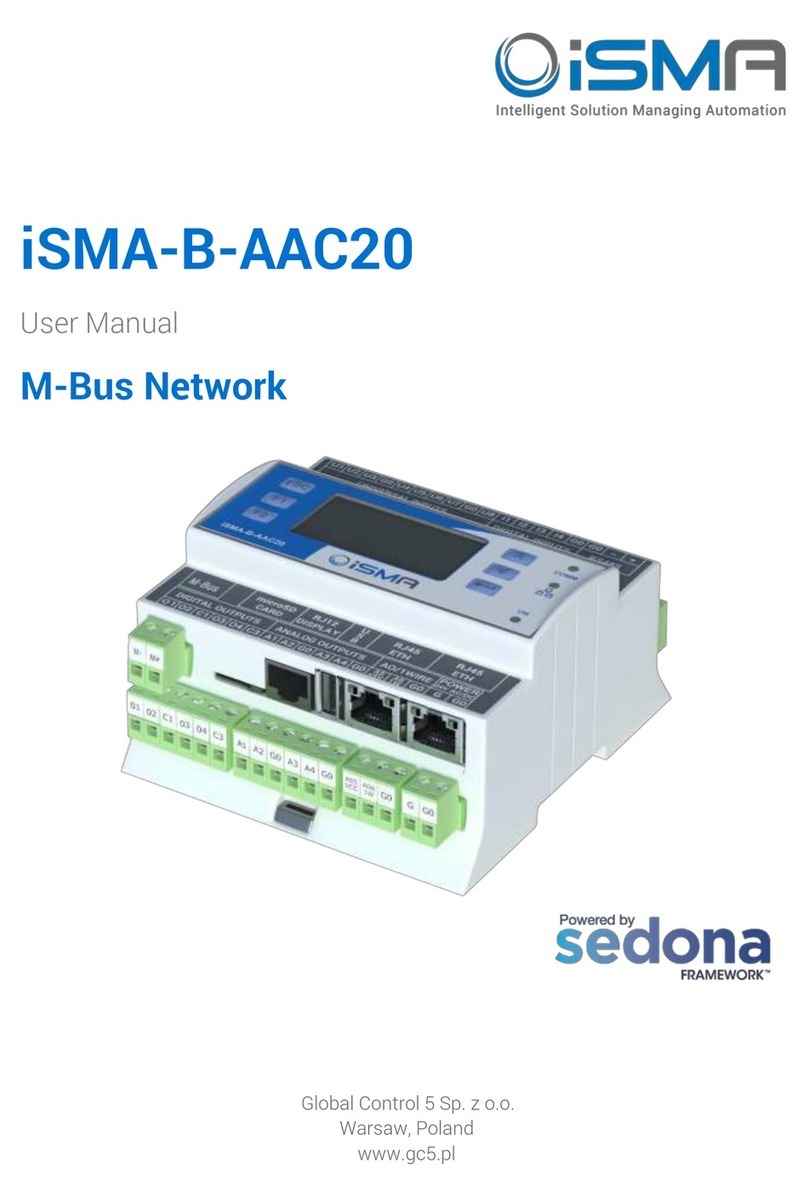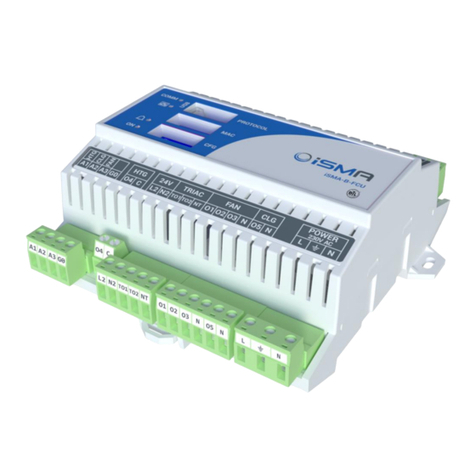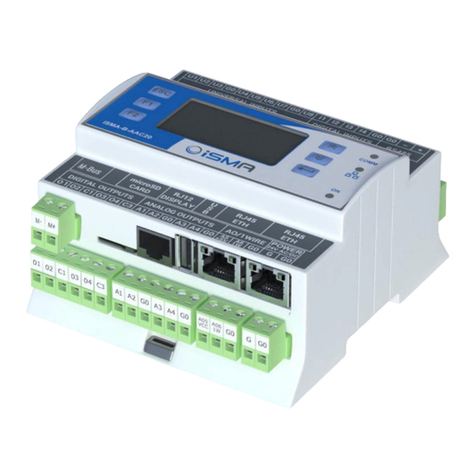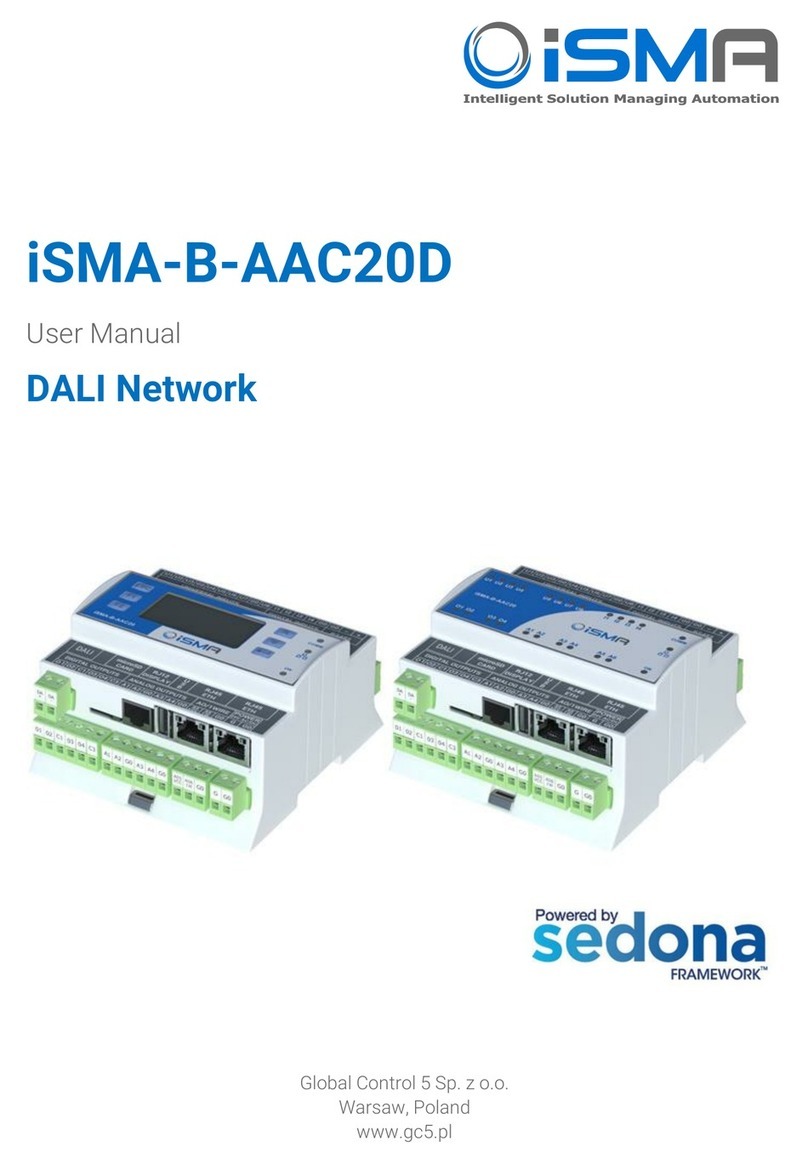iSMA-B-AAC20/Sedona Modbus
Version 1.3 www.gc5.pl Page 2/ 55
Table of contents
1Introduction............................................................................................................................... 4
1.1 Revision history ................................................................................................................ 4
2Sedona Modbus....................................................................................................................... 4
3Installing iSMA Modbus kits.................................................................................................. 7
4Modbus Async Network kit.................................................................................................... 8
4.1 Modbus Async license and limitation .......................................................................... 8
4.2 Modbus Async Network.................................................................................................. 8
4.3 Modbus Async Device...................................................................................................11
4.4 Modbus data points....................................................................................................... 13
4.4.1 Modbus Async Boolean Point .........................................................................13
4.4.2 Modbus Async Boolean Writable.................................................................... 14
4.4.3 Modbus Async Numeric Point.........................................................................16
4.4.4 Modbus Async Numeric Writable ...................................................................17
4.4.5 Modbus Async Numeric Multi Point .............................................................. 19
4.5 Modbus folder.................................................................................................................20
5Modbus TCP Network kit .....................................................................................................21
5.1 Modbus TCP license and limitation............................................................................21
5.2 Modbus TCP Network ...................................................................................................21
5.3 Modbus TCP Device.......................................................................................................23
5.4 Modbus TCP data points ..............................................................................................25
5.4.1 Modbus TCP Boolean Point .............................................................................25
5.4.2 Modbus TCP Boolean Writable .......................................................................27
5.4.3 Modbus TCP Numeric Point ............................................................................28
5.4.4 Modbus TCP Numeric Writable.......................................................................30
5.4.5 Modbus TCP Numeric Multi Point..................................................................31
5.5 Modbus folder.................................................................................................................33
6Modbus TCP Slave Network kit (IP Module) ....................................................................34
6.1 Modbus TCP Slave Network ........................................................................................35
6.2 Modbus TCP Slave data points ...................................................................................35
6.2.1 Boolean Value.....................................................................................................36
6.2.2 Numeric Value ....................................................................................................37
6.3 Modbus Folder................................................................................................................39
6.4 Modbus RS 485 Slave Device (COM1) .......................................................................40
6.4.1 Modbus Slave COM1 wiring.............................................................................40
7Gateway mode .......................................................................................................................42
8iSMA Module...........................................................................................................................43
8.1 iSMA Device.....................................................................................................................44
8.2 iSMA Device config component ..................................................................................44
8.3 iSMA IO components.....................................................................................................45
8.3.1 DI components ...................................................................................................45
